Ever wondered why the same queasy feeling hits you on a bumpy bus ride and again on a windy boat? The answer lies in a surprisingly tight link between motion sickness and seasickness. Both tap into the same inner‑ear system, share similar triggers, and often respond to the same remedies. Below we break down what each condition really is, why they overlap, and what you can do to keep the nausea at bay.
What is Motion Sickness?
Motion sickness is a disturbance of the vestibular system that causes nausea, dizziness, and sometimes vomiting when the brain receives mismatched motion signals. The classic scenario involves sitting in a car, train, or VR headset while your inner ear senses movement that your eyes don’t confirm. This sensory conflict triggers the autonomic nervous system, leading to the classic queasy cocktail of cold sweats, pallor, and the urge to vomit.
- Common triggers: reading while riding, looking down at a phone, or rapid changes in direction.
- Typical symptoms: dizziness, cold sweats, headache, and a hollow feeling in the stomach.
- Who’s at risk: teenagers, pregnant women, and anyone with a sensitive vestibular apparatus.
What is Seasickness?
Seasickness is a specific form of motion sickness that occurs when the inner ear detects the rolling and pitching motions of a boat, while the visual field often remains relatively stable. The rolling waves create a constant, low‑frequency motion that’s hard for the brain to reconcile, especially when you’re focused on a fixed point on the deck or reading a map.
- Common triggers: rough seas, unfamiliar boat motion, and staying below deck where visual cues are limited.
- Typical symptoms: the same nausea and vomiting as other motion disorders, plus a lingering feeling of disorientation even after returning to land.
- Who’s at risk: older adults, children, and anyone prone to regular motion sickness.
Shared Physiology: Why the Two Conditions Overlap
Both motion sickness and seasickness stem from a mismatch between three key sensory inputs:
- Vestibular system - tiny hair cells in the inner ear that detect linear and angular acceleration.
- Visual system - what your eyes see, which often tells the brain you’re stationary.
- Proprioceptive feedback - signals from muscles and joints about body position.
When these inputs don’t line up, the brain flags a potential toxin and activates the autonomic nervous system to purge it, resulting in nausea and vomiting.
The inner ear is the common denominator. Its semicircular canals and otolith organs send signals about rotation and gravity. In a car, the otolith organs sense forward acceleration while the eyes see a static road. On a boat, the semicircular canals register a constant roll, but the horizon might stay relatively still, creating the same conflict.
| Aspect | Motion Sickness | Seasickness |
|---|---|---|
| Primary trigger | Inconsistent visual‑vestibular signals (e.g., reading in a moving vehicle) | Continuous roll and pitch of a vessel |
| Typical environment | Cars, trains, planes, VR simulators | Boats, yachts, ferries |
| Severity range | Mild dizziness to incapacitating vomiting | Often more severe due to prolonged exposure |
| Prevention focus | Visual stabilization, break‑up of reading | Position on deck, horizon focus, anti‑motion meds |
| Common remedies | Ginger, antihistamines, scopolamine patches | Same meds, plus decongestants for sea‑induced ear pressure |
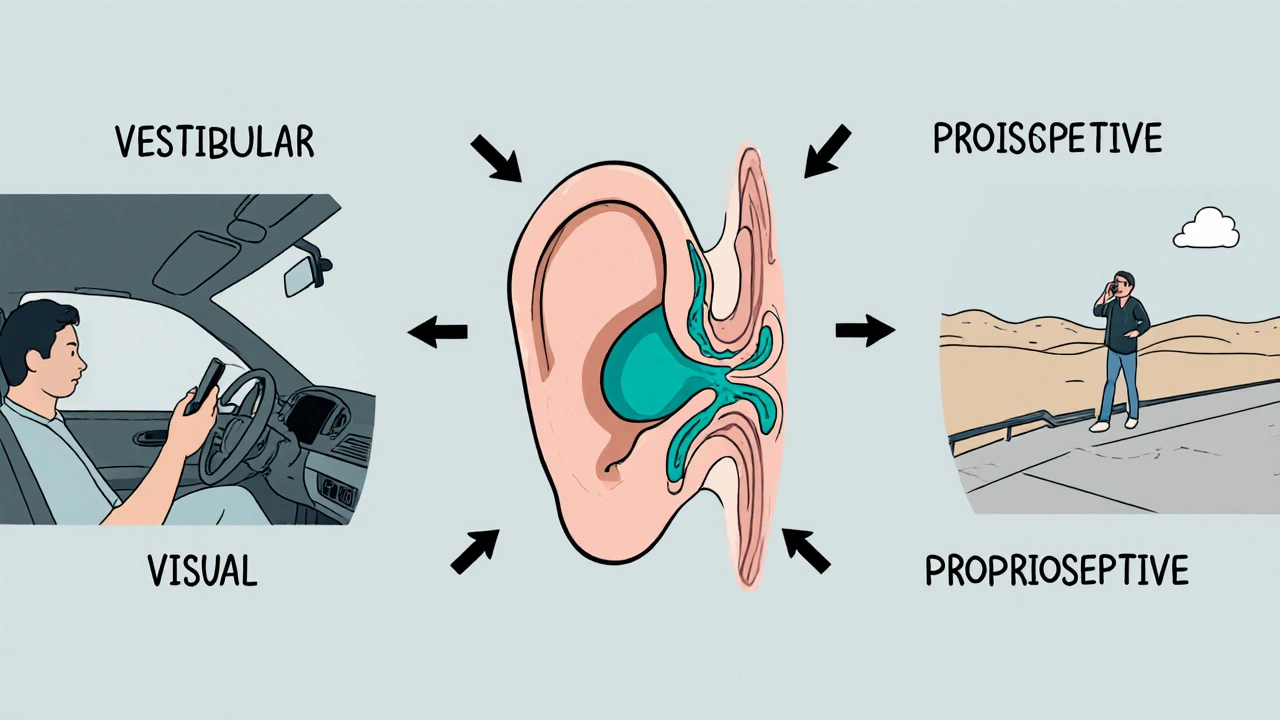
Why Some People Feel Worse Than Others
Research from the 2023 International Vestibular Institute shows that genetic variations in the CHRNA7 gene affect how the brain processes vestibular signals. People with certain variants report up to 40% higher susceptibility to motion‑induced nausea. Age also matters - children’s vestibular systems are still maturing, while older adults may have age‑related decline in visual‑vestibular integration.
Other contributors include:
- Inner‑ear infections - inflammation can amplify motion signals.
- Medications - some antibiotics and antidepressants heighten sensitivity.
- Stress and fatigue - a tired brain is less able to resolve sensory conflict.
Prevention Strategies That Work for Both Conditions
Because the root cause is the same, many tactics help with both motion sickness and seasickness.
- Look at the horizon - aligning visual input with the true direction of motion reduces conflict.
- Seat selection - sit in the front of a car, over the wings of a plane, or mid‑ship on a boat where motion is least pronounced.
- Limit visual focus inside - avoid reading or screen time for the first 15‑20 minutes of travel.
- Control breathing - slow, deep breaths engage the parasympathetic system and blunt nausea.
- Hydration and light meals - an empty stomach can worsen symptoms, but heavy meals also increase risk.
- Ginger intake - 1 g of ginger root or two ginger chews a half‑hour before travel cuts nausea by about 30% (study, 2022).
For sea voyages, staying on the deck where you can see the horizon is crucial. If you must stay below, use a porthole or a video feed that shows the outside.
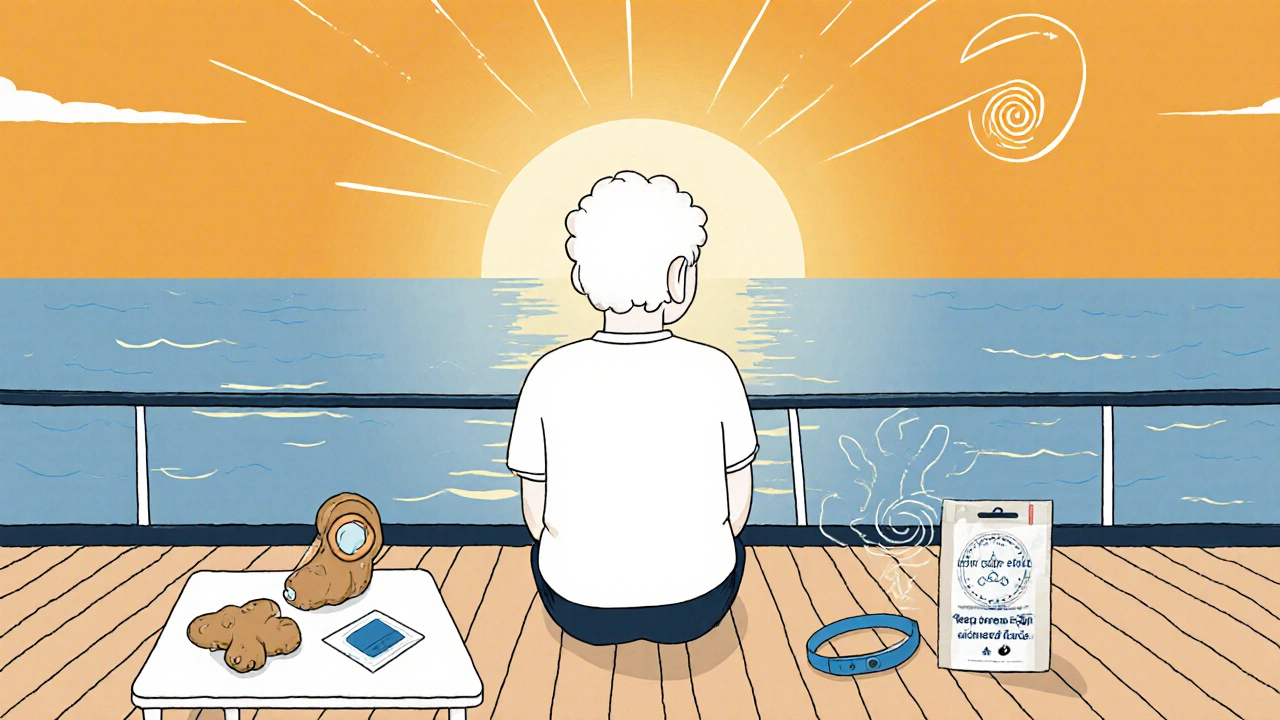
Treatment Options: From Over‑The‑Counter to Prescription
When prevention isn’t enough, medication steps in. The three most common classes are:
- Antihistamines - dimenhydrinate (Dramamine) and meclizine block histamine receptors in the brain’s vestibular nuclei.
- Anticholinergics - scopolamine patches, placed behind the ear, inhibit signals from the vestibular nerve.
- Serotonin antagonists - ondansetron, originally for chemotherapy‑induced nausea, works for severe cases.
For people who can’t tolerate these, non‑pharmacologic options include acupressure wrist bands that stimulate the P6 point, and vestibular habituation exercises (e.g., repeated exposure to motion in a controlled setting).
Always talk to a healthcare provider before starting prescription meds, especially if you have glaucoma, prostate issues, or are pregnant.
Frequently Asked Questions
Can seasickness affect people who never get motion sickness on land?
Yes. The constant low‑frequency rocking of a boat can overwhelm even a well‑adjusted vestibular system. The key is that the motion pattern is different from most land travel, so the brain can still experience a mismatch.
Is there a test to see if I’m prone to motion sickness?
The Dix‑Hallpike maneuver evaluates vestibular function, and a simple rotational chair test can predict susceptibility. Some clinics also offer genetic screening for CHRNA7 variants.
Do anti‑motion medicines work for virtual reality (VR) nausea?
They help, but VR adds a visual‑only component that some meds don’t fully address. Combining low‑dose antihistamines with frequent breaks and proper headset positioning usually yields the best results.
Is ginger safe for everyone?
Generally, yes. However, people on blood‑thinners should limit large doses because ginger can mildly affect clotting.
How long does seasickness usually last after a trip?
Most people feel normal within a few hours, but the lingering “sea legs” effect can last up to 24 hours, especially after multi‑day voyages.
By understanding that motion sickness and seasickness share the same inner‑ear circuitry, you can pick strategies that target the root cause rather than just the symptoms. Whether you’re planning a road trip, a cross‑country flight, or a weekend sailing adventure, the right mix of prevention, positioning, and, if needed, medication will keep the waves of nausea at bay.

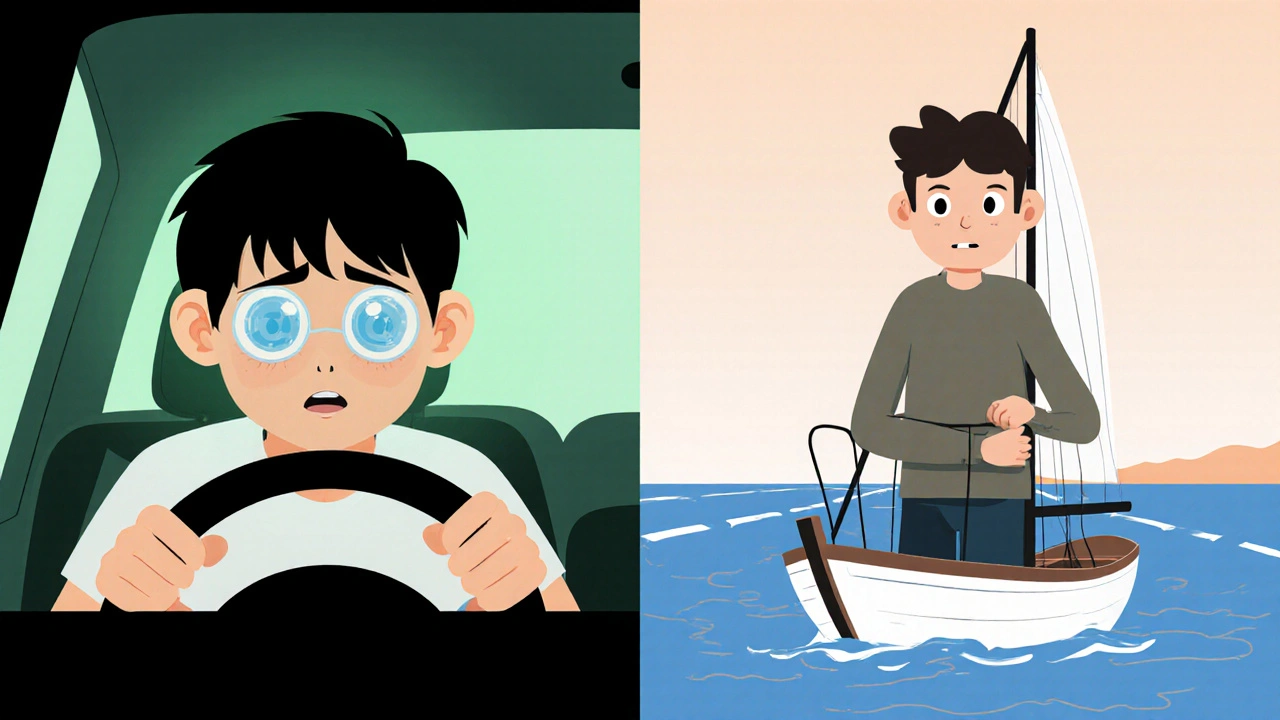


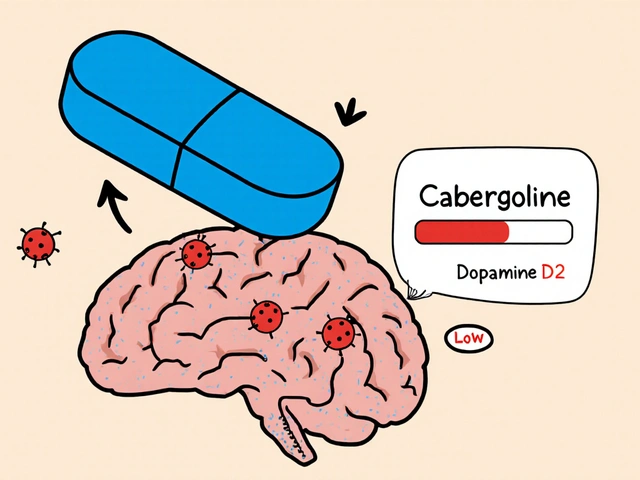

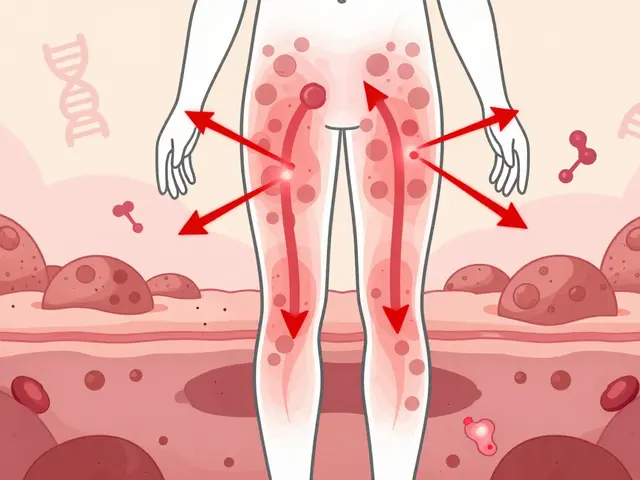
October 23, 2025 AT 23:30
Looks like the pharma giants are cashing in on your inner‑ear drama – push the scopolamine patches and watch the profits soar. Meanwhile, you could just stare at the horizon, hydrate, and chew some ginger without the side‑effects. The vestibular system isn’t a secret weapon for mind control, it’s just physics doing its thing. Keep your eyes on the steady line out there and the brain will stop screaming “toxic!” 😒